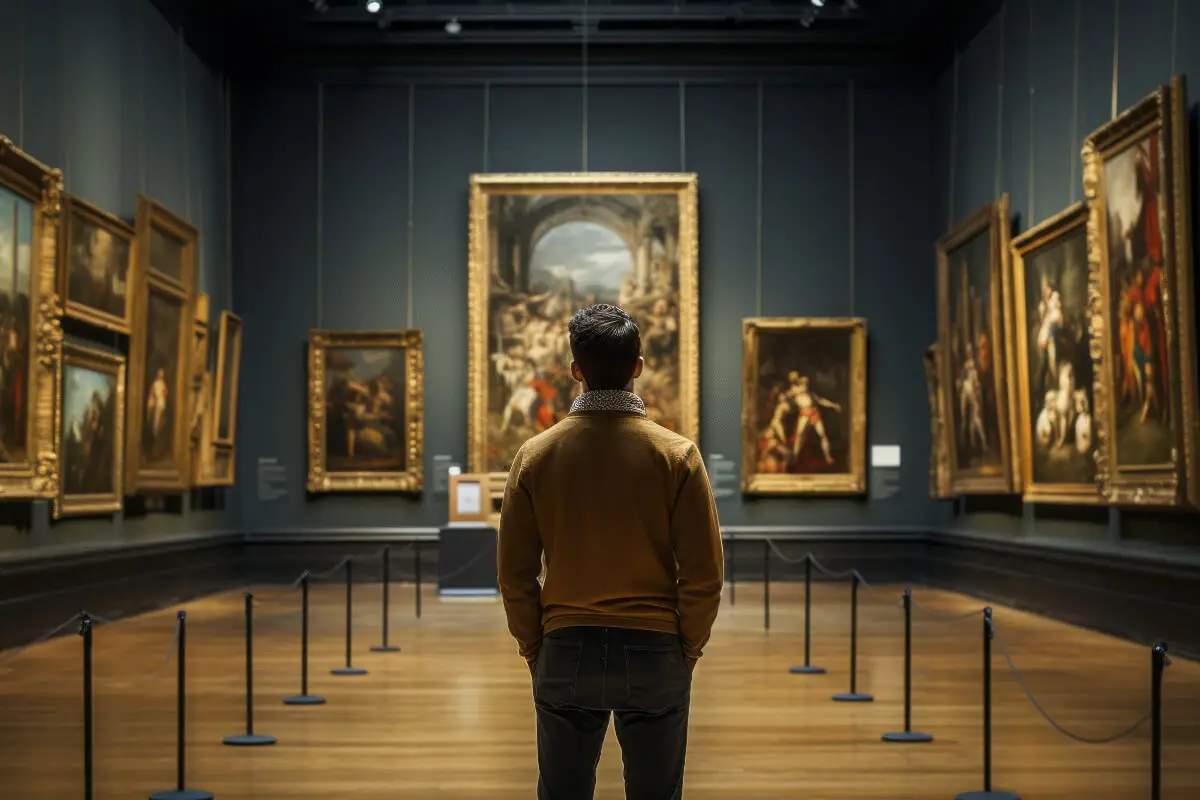As the heartbeat of our creative spirit pulses, what emerges are stunning and influential compositions that transcend the boundaries of time and culture, collectively known as contemporary art. This vibrant spectrum of exhibits, brimming with vigor from the pantheon of modern artists, has been ceaselessly revolutionized since the onset of the 20th century.
Within the sheltering walls of art museums, these contemporary masterpieces have found a home, a space for the public to engage and interact with them. This dialogue between the observer and the creation, mediated by the evolving aesthetics, collecting challenges, and the encroachment of technology, has been essential in shaping society’s understanding and appreciation of contemporary art.
Table of Contents
- The Evolution of Contemporary Art
- Collecting and Presenting Contemporary Art
- Impact and Role of Contemporary Art Museums
- Technology and Contemporary Art Museums
- Related Questions
The Evolution of Contemporary Art
Embracing Change: The Evolution of Contemporary Art and Its Influence on Museum Curation
The evolution of contemporary art – a vast, complex, and paradoxically intangible realm of creative expression – has significantly redefined the museum curation landscape over the past few decades.
Its refining influence reflects an ongoing dialogue between past and present, tradition and experimentation, reflecting the dynamic evolution of contemporary art itself.
Contemporary art’s inherent diversity and fluidity have necessitated a reexamination of curation practices from a fresh and evolving perspective. Adapting to this ever-changing field, curators endeavor to unearth the underrepresented narratives that align with the expanded definitions of art, going beyond the confines of established aesthetics and mediums.
The rise of installation and performance art has brought fresh challenges to curation. The traditional approach of hanging paintings and positioning sculptures has given way to more meticulous, immersive arrangements, requiring keen sensitivity to space and audience interaction.
By perceiving this shift, curators have become more inventive and flexible, carefully crafting visitor experiences that honor these mediums’ temporal and experiential elements.
The dawn of digital and new media art has also ushered in unprecedented expansion in curatorship. Interactive digital works, video installations, and virtual reality art now inhabit galleries, pushing the boundaries of hitherto conceived museum spaces.
Integrating technology into the museum curatorial process facilitates immersive and accessible art experiences for audiences, democratizing art appreciation in hitherto unforeseen ways.
Confronted with the increasing globalization of the art world, curators have become conscious of their crucial role in cultural representation. Contemporary art’s global narrative compels curators to consider diverse perspectives and contexts in their exhibitions.
Showcasing artists from varied cultural backgrounds and fostering cross-cultural dialogues have become integral facets of modern curation. In doing so, contemporary art museums have evolved into vibrant platforms for promoting inclusivity and understanding.
Relatedly, the expanded socio-political consciousness in contemporary art has seen museums become spaces for debate and discourse. Curators must negotiate the delicate balance between presenting controversial works and engaging the public mindfully. These exhibitions provoke thought, challenge societal norms, and stimulate constructive dialogue, amplifying art’s role as a vehicle for change.
Moreover, the influence of contemporary art focuses on the audience’s engagement, reshaping the curatorial approach to a more interactive model. Acknowledging the necessity of dialogue, museums have strived to foster participatory experiences, welcoming public input and encouraging a democratic sharing of interpretations.
Through all these developments, the essence of curation continues to resonate – to facilitate the vital bridge between the artwork and its audience, to narrate the unspoken dialogues, and to honor the profound connectivity that art fosters.
As the evolutionary wheel of contemporary art continues to turn, so will the transformative strategies of museum curation. This symbiosis promises to bring the world of art into uncharted territories of exploration and discovery.

Collecting and Presenting Contemporary Art
The landscape of contemporary art is as dynamic and varied as the artists who contribute to it. This fluidity poses distinctive challenges but also presents unique opportunities for art curators. Defining the contours of the curator’s role in this changing climate involves tackling issues of accessibility, authenticity, inclusivity, and interpretation.
In an era characterized by public participation and engagement, curators grapple with the task of making contemporary artworks not only viewable but also accessible to diverse audiences. Some contemporary artists also use universal narratives on personal, distinctive, or abstract themes.
Therefore, One of the roles taken by c undertake reform involves making these varied narratives accessible and relatable to broad audiences.
This challenge mandates an innovative approach in the placement, accompanying texts, and overall presentation of the artworks, transforming them into gateways for layered art appreciation and understanding for every viewer.
Another critical challenge curators face in contemporary art is balancing authenticity with legibility. On the one hand, they seek to respect and maintain the original intent and context of the artist’s work.
On the other hand, they need to ensure that artworks are presented in ways that accommodate the viewers’ capacity for comprehension, calling for delicate negotiations between fidelity to the artwork and the interpretive strategies that would allow viewers to appreciate the very essence of each piece.
Inclusivity poses another challenge for curators. Curators contribute to the shift toward an equitable art landscape as the art world wakes up to its complicity in perpetuating systemic bias and exclusion.
In this regard, a significant part of the curatorial task involves uncovering and presenting works by marginalized artists who have been overlooked or excluded. This effort demands extensive knowledge and research skills on the part of curators and for social justice.
The interpretive dimension of curating presents another challenge. Contemporary art often tests the boundary of what can be called art, resulting in works that defy traditional exhibition strategies. Thus, curators must devise new ways of interpreting and presenting such pieces while staying faithful to the artists’ intent.
This challenge takes creativity to a whole new level as curators perform the balancing act between upholding the integrity of such contemporary pieces and making them palatable to the viewing public.
Lastly, new technologies, such as augmented and virtual reality, present challenges and opportunities. Curators must now familiarize themselves with such technologies to enhance the viewing experience.
However, these tools also put forth pressing questions about the authenticity of the viewing experience and the role of physicality in art appreciation.
Tackling these challenges demands an adaptive and growth-oriented ethos from curators. Their strategies involve coping and engaging with contemporary art’s dynamism and diversity. It requires deep empathy for the artist and the audience, relentless curiosity, creativity, and a firm commitment to inclusivity and learning.
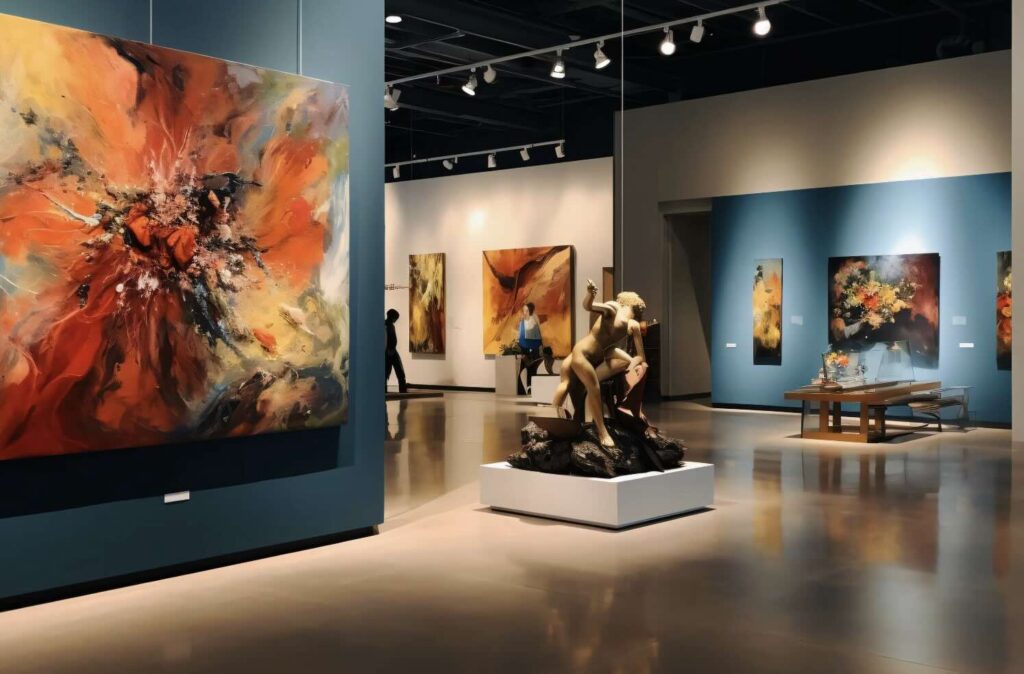
Impact and Role of Contemporary Art Museums
Contemporary art museums remain indispensable institutions in society as they shape cultural narratives, stimulate critical thinking, and broadly influence public opinion. These institutions reflect our socio-cultural evolution like a mirror that has borne witness to each shift, each movement, steering societal thought and perception.
Museums have a decisive role in the conservation and exhibition of contemporary art, ensuring that various artists’ creations are protected while presenting them to the public.
With contemporary art’s unpredictability and divergence from traditional forms, preserving these works of art becomes an intricate and detail-oriented endeavor.
This requires adaptability on behalf of curators, who must be flexible and forward-thinking in their approaches while also maintaining respect and understanding for the art’s original intent, the context in which it was created, and the artist’s vision.
Furthermore, making contemporary art accessible to a diverse audience is a significant responsibility for these museums. Their role isn’t confined to displaying creative objects but also translating abstract expressions into legible experiences for the audience.
This balancing act—dispelling elitism yet not diluting the authenticity—requires keen sensibility and creativity from the museum and its curators.
Inclusivity is another dimensional aspect of contemporary museum curation that warrants attention. More than ever, the spotlight is cast on the works of artists from marginalized communities whose perspectives have been repeatedly overlooked or silenced.
By presenting these compelling narratives in a contemporary art museum context, the museum validates their experiences and voices. Such inclusion enriches the museum’s collection and provides guests with a more comprehensive, more diverse understanding of contemporary art and society.
The interpretive challenge of curation is another segment of concern in contemporary museums. While traditional art often communicates clear, singular messages, contemporary art can bear multiple meanings depending on the viewer’s perspective.
The task of the contemporary art curator is to provide the necessary context without diluting the work’s depth and the viewer’s interpretations.
Utilizing new technologies in this realm is another revolutionary stride in contemporary art curation. With the rise of VR and augmented reality, museums can now offer virtual tours, interactive experiences, and immersive installations that radically redefine the connection between the audience and the artwork.
This tech-integrated approach is a testament to the evolution and adaptability of curators and museums to the changing landscape of the art world.
In conclusion, contemporary art museums play a significant role in today’s society as custodians of creative expression, as a bridge between the artwork and its audience, and increasingly, as catalysts for much-needed social change.
These institutions embrace fresh, evolving, dynamic thought and pave the way for an adaptive, growth-oriented future. A future where art, in its myriad forms, is celebrated, contemplated, and continuously redefined.
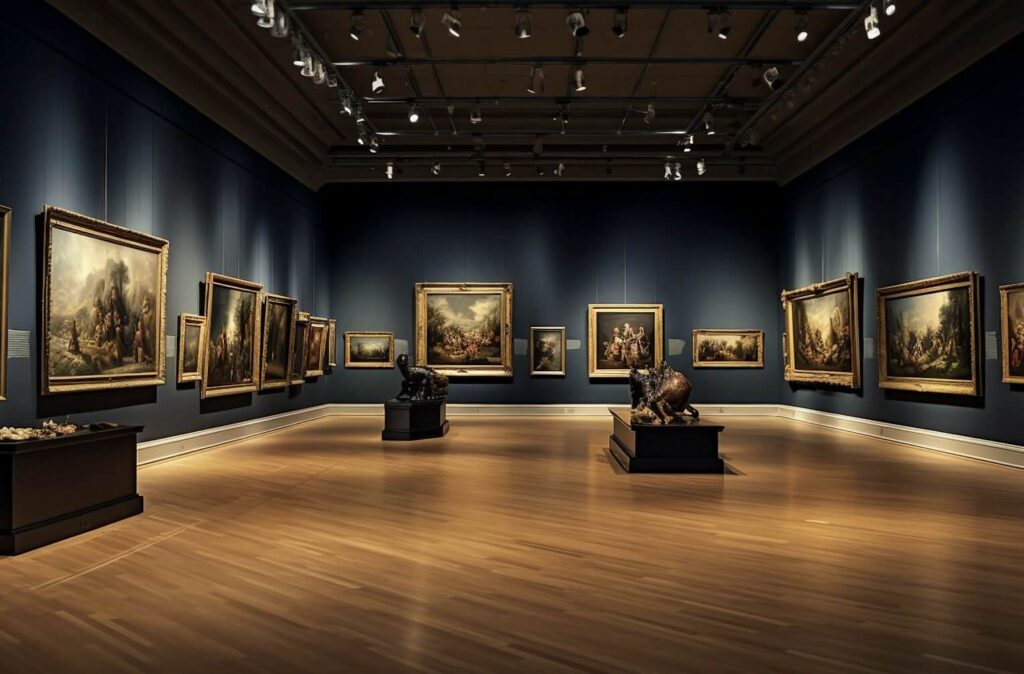
Technology and Contemporary Art Museums
Iconic contemporary artworks are often celebrated for their innovative perspectives, pushing boundaries of artistic expression and challenging conventional art norms. Some have even become staples in the global museum circuit, with fascinating backstories that add to their allure.
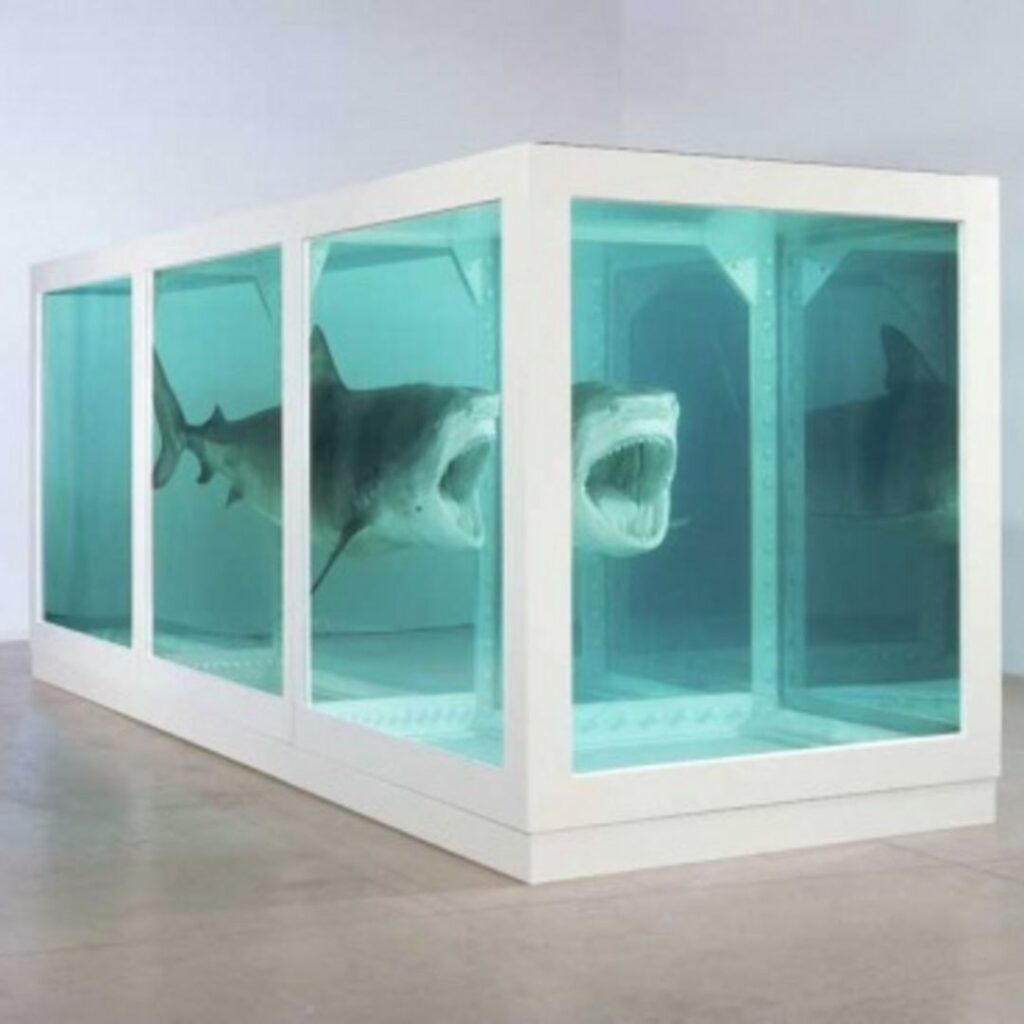
One such iconic work is Damien Hirst’s “The Physical Impossibility of Death in the Mind of Someone Living,” which is currently housed in London’s Serpentine Gallery. This controversial piece, featuring a tiger shark preserved in formaldehyde, echoes a stirring confrontation with mortality and the futility of human attempts to overcome it.
Hirst’s penchant for challenging traditional artistic mediums takes a visceral form here, pushing viewers beyond comforting boundaries of aesthetic appreciation into raw, unsettling contemplation of existence.
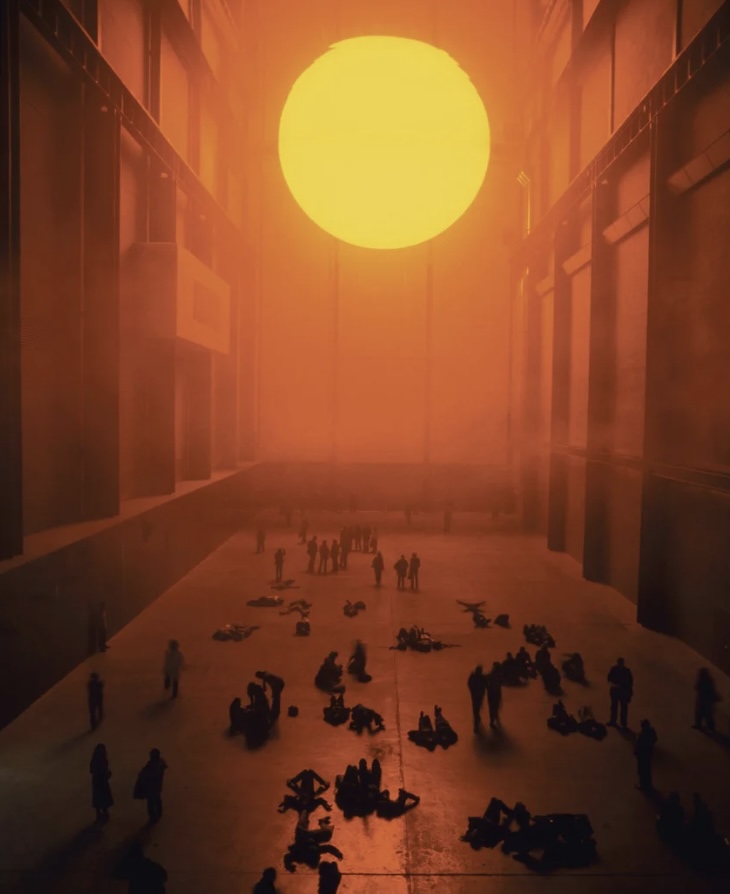
Across the Atlantic in New York’s Museum of Modern Art (MoMA), we find the intriguing installation “The Weather Project” by Olafur Eliasson. An immense artificial sun and a misty haze engulf the museum’s Turbine Hall, mirroring the natural phenomena of sunrise and fog.
Eliasson compels viewers to question the implications of re-creating nature within an artificial space through this work. Here, contemporary art isn’t confined to alluring spectacles but serves an educative purpose, drawing attention to our fraught relationship with nature amidst the looming climate crisis.

Another notable work is Yayoi Kusama’s “Infinity Mirror Rooms,” exhibited across several museums, including Los Angeles’s The Broad and Washington’s Hirshhorn Museum. Kusama’s immersive spaces, filled with infinite reflections of flickering lights and repetitive patterns, pull viewers into a surreal universe.
This all-encompassing experience breaks down the boundary between the artwork and the audience, immersing viewers in the artist’s exploration of infinite expansion and the sublime.

In Paris, the Centre Pompidou showcases Anish Kapoor’s “Leviathan” – a vast structure that compels audiences to ponder their place within the universe. Part sculpture, part architecture, ‘Leviathan’ defies categorization, mirroring the multifaceted nature of contemporary art.
This acclaimed piece often morphs in significance with the political realities surrounding its display. Initially meditating on the artist’s form, Kapoor later dedicated the artwork as a monument to the Syrian refugees and the human displacement crisis.

Chicago’s Art Institute features Grant Wood’s enigmatic painting “American Gothic,” often perceived as depicting rural American life. However, beneath the surface of this once-controversial image, landscapes and familial relationships intricately intertwine with socio-political narratives, prompting discussions around class, place, and identity.
In essence, these iconic exhibits not only redefine the understanding of art but also contribute to museums’ mission—to engage visitors in significant contemplations about life beyond the confines of the museum. They remind the audience that art is for passive viewing, active participation, engagement, and transformation.
With their innovative curatorial strategies, museums play a pivotal role in ensuring contemporary art remains accessible, relevant, and poignant, prompting us to question, interpret, and understand the world around us better.
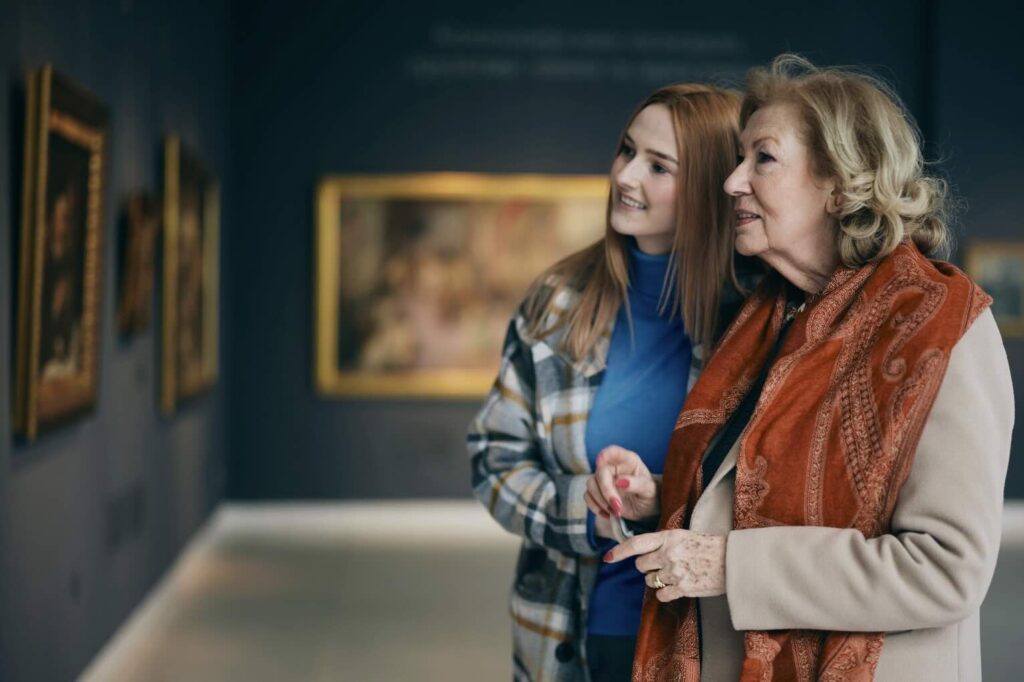
As we part from our exploration of contemporary art museums, it is clear that they play a critical role in enriching our societal landscape, serving not just as repositories of contemporary masterpieces but as venues for dialogue, reflection, and cultural understanding.
Combining preservation, curation, and communication, these museums present art as an accessible language, as a medium to discuss the poignant and the powerful. Infused with technological advancements, they are forging into a future where art is all the more immersive and engaging.
These spaces reinforce our collective consciousness, reminding us of our past achievements, our present scope, and the unrestricted potential of our creative future.
Anita Louise Art is dedicated to art education, great artists, and inspiring others to find and create their art. We love art that uplifts and inspires. #ArtToMakeYouSmile! #ArtToMakeYouHappy!
If you want to see any of my art, you can find out more by clicking here. If you are interested in what inspires me and my paintings, you can discover more by clicking here.
We have a free newsletter and would love you to be part of our community; you can subscribe to the newsletter by clicking here. If you have any questions, I would be happy to talk to you. You can reach me, Anita, by clicking here.
Subscribe to our Anita Louise Art YouTube Channel with great videos and information by clicking here.
Join us for our podcast “5 Minutes With Art.” Spend just 5 minutes a week with us to discover and learn about great art and artists. You can find out more about our podcast by clicking here.
Related Questions
Grandma Moses Sold Her First Painting At Age 79 – And Other Facts
Grandma Moses started painting at age 78 and sold her first paintings at 79. She lived to be 101 years old, and throughout that time, she was a prolific painter that painted over 1500 different paintings. She never had the opportunity to attend art school, so she was a completely self-taught painter.
By clicking here, you can learn more by reading Grandma Moses Sold Her First Painting At Age 79 – And Other Facts.
Art And History – Understanding Our Past
When we study art, it helps us understand and gives us clues to the past. As we see what the artist has painted, we can piece together what life was like during that time in history. Art also helps us better understand the cultures and people who once lived and their life.
You can discover more by reading Art and History – Understanding Our Past by clicking here.
Am I Too Old To Start Oil Painting?
You are never too old to learn to oil paint. You can start to oil paint at any age. If Grandma Moses could learn to paint at age 78, then she set an example for us all – that you are never too old to learn to paint. There are some advantages to learning to paint when you are older vs. younger.
By clicking here, you can discover more by reading Am I Too Old To Start Oil Painting?

